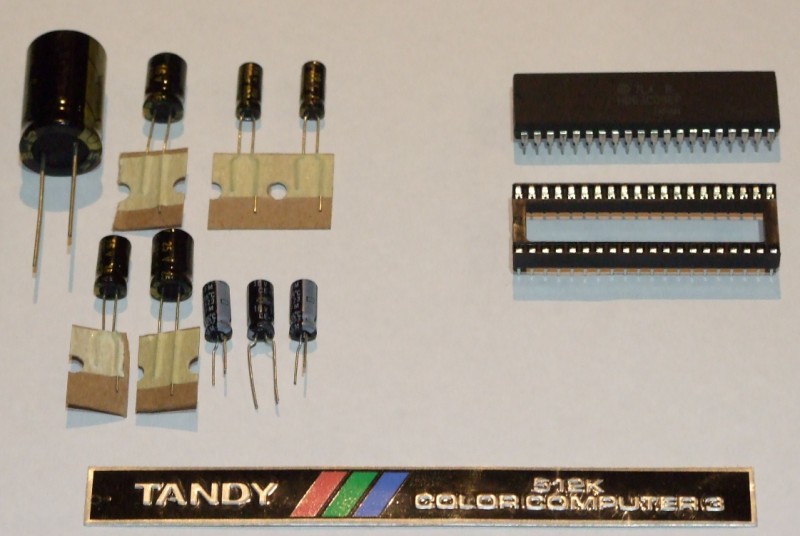|
For Branching Out, the Apple
][ website, click HERE.†† TRS-80 gallery of user's
machines is at the bottom of this page.†
Updates for 23/4/22: FreHD Emulator
F48 for TRS-80 Model II/12/16/16B/6000 My email address:
ianm@trs-80.com Links for people who want to
buy TRS-80 stuff from me: Model I††††††† Model III††††††† Model 4†††††† Model 100†††††††† Coco††††††† Tape/Floppy/Hard
Drives††††††† Software/Books/Mags†††† Garage Sale†††† New stuff† Chips/Bits††††† FreHD Emulator†††† System 80††††† Downloads††††† Hi-Res Graphics†††† Rietveld††††††† FreHD
Clearly Superior Package Deals †††††††††††††††
Ian Mavric -
Australian TRS-80 Recycler Hardware support for TRS-80 Model I/III/4, Coco
1-2-3, Tandy 2000 and Tandy MS-DOS semi-compatibles and accessories: * Buying and selling Tandy
and TRS-80 computers or parts thereof * Repairs and upgrades to
TRS-80 computers (where possible)
* DOS boot disk and
software supply for replacement or worn out original disks - see below. * Consignment sales of
TRS-80 equipment * Items sourced from the
USA for collectors - TRS-80 items not released in Australia a specialty Got a Tandy or TRS-80
system (any model) you wish to dispose of?†
Drop me an email and Iíll be in touch within 24 hours!† Whether it works or not, or even if its not
complete, I'm interested.
Phone: (613) 9390 0797 or
0416 184 893 or E-mail: ianm@trs-80.com -------------------------------- TA-22 Tandy Assembly 2021 has been and gone
and the 2022 event is already in the planning stages.† This year it will be on the 30th of
September to the 2nd of October, again in sunny Springfield, Ohio in the USA.
For more information, go to: Tandy Assembly web site -------------------------------- New!! Repro FDC and Serial cards for the TRS-80 Model III and 4NGA (Released 1st Qtr 2022) Who is it for? These are repro
standard replacement floppy disk controller (FDC) and Serial (RS-232-C)
boards for the Model III and 4 (non-gate array versions).† Both come with new white cables.† † ONLY $USD99.00 and $USD79.00 respectively + shipping -------------------------------- New!! F48: FreHD for 8in TRS-80s (Released 1st Qtr 2022) Who is it for? It's a FreHD
but for the 8in TRS-80s, runs CP/M, TRSDOS-II, and Xenix!
(Xenix requires a 68K processor system like a 16B
or 6000, or upgraded II/12).† You need
a Type-II HDA in your computer, and you are good to go!†††
ONLY $USD109.00 + shipping -------------------------------- New!! HD63C09E CPU Upgrade for Coco 3 (or 2 or 1) (Released 25th April, 2020) Who is it for? It's for Coco
3 owners who want to upgrade the processor from a 68B09E to the Hitachi
HD63C09E to take advantage of increasingly advanced new software like
Nitros/09 and new games from Nick
Marentes.† I can upgrade your CPU, or CPU and re-cap the motherboard at the same
time, or even upgrade the Ram to 512K while it's here.† I even carry the 512K case badges to finish
off your machine.
HD63C09E ONLY $A60.00
+ return postage HD63C09E +
Re-cap $A80.00 + return postage HD63C09E +
Re-cap + 512K (inc. badge) $A150.00
+ return postage
512K Coco 3
badge on it's own $A25.00
inc. postage (Looks odd in the photo above because
it still has it's protective plastic covering on it - it looks like a normal
CC3 case badge once fitted.) -------------------------------- New!! Orchestra-85 Repro for the Model I (Released 25th April, 2020) Who is it for? It's a stereo
music synthesiser with up to six octaves, 5 simultaneous notes (or voices), each
of which can be assigned any of five instrumental choices (tone colour
registers).† Plays old /ORC music
files.
ONLY $USD60.00 + shipping -------------------------------- New!! Model I Heavy-Duty PSU Kit ~ now with cables! ~ (Released 4th February, 2020) Who is it for? It's for
Model I owners who want a reliable power supply to replace the original
'black brick' which regularly fail after 40+ years of use.† My kit comprises of the PSU circuit board,
and the pictured discrete components.† When it arrives you need to order the two transformers in your own
country.
ONLY $USD55.00 + shipping -------------------------------- New!! Coco RS-232C Interface (Released 9th December, 2019) Who is it for? It's for Coco
owners who want a reliable high-speed RS232 port which leaves the bit-banger
serial port free to connect a printer.†
My repro Coco RS232 Pak is fully compatible with the old R.S Deluxe
RS232 program pak cat. no. 26-2226 but made from
new components and with gold plated connector for reliability.
ONLY $USD55.00 + shipping -------------------------------- New!! Model III/4/4P Orchestra-90 Repro (Released 9th December, 2018) Who is it for? It's a stereo
music synthesiser with up to six octaves, 5 simultaneous notes (or voices),
each of which can be assigned any of five instrumental choices (tone colour
registers).† Plays old /ORC music
files.
ONLY $USD60.00 + shipping -------------------------------- New!! Model I/III/4/4P/4D Printer cable (Released 9th December, 2019) Who is it for? It connects a
printer to a Model I, III, 4, 4P, 4D or Tandy 1000 computer.†
ONLY $USD32.00 + shipping -------------------------------- New!! Extender Cards for the 8in TRS-80s (Released 9th December, 2018) Who is it for? These cards
connect to the TRS-80 Model II/12/16/16B/6000 and bring the cards out of the
card cage to where you can work on them.
ONLY $USD100.00/pr + shipping
(or $US60.00ea) -------------------------------- NEW!! LOWERCASE
KITS Two
new lowercase modifications for the Model I (Released 7th March, 2018) Who is it for? It's
for Model I owners who want to add lowercase characters to their standard
systems. Also if you have the early lowercase modification with no
descenders or the flying 'a'. In the case of Gendon3 you get three
line descenders though more work is required.
Micro-LC-80 Gendon3 †††† 1-line
descenders 3-line
descenders ONLY $USD45.00ea + shipping -------------------------------- NEW COCO RELATED ITEMS: Added 1st January, 2018 RE-FD502 controllers back in stock
(Kit and Assembled)
Experimenters 2764 cart
Diagnostics cart 2.0
See the Coco page for
more details. -------------------------------- WISH LISTS OF TANDY TRS-80 ITEMS (Added 22nd Dec, 2012) It's come to my attention
from a few of my regulars that a lot of people watch this site looking for
newly-listed items hoping that something they have been looking for for a long time shows up.†
While this may happen, its also possible that I already have the item
on hand and just have never thought it list it here.† I have literally hundreds of small items,
software, spare parts and accessories for TRS-80s, not just what is listed
here.† In fact if I were to try to list
everything on this site and update it as things come in and go out it would
be more than a full-time job.† So by all means, if you
are after some weird accessory for your Model III or a special game tape for
your Coco, or anything in between, then ask me.† If I don't have it I may suggest you go on
a waiting list here for said item, you never know when I might see it in my
travels.† This also goes for systems
not listed on this site and hard drives. --------------------------------- NOTES ON SHIPPING TO OTHER COUNTRIES (Added 24th June, 2012) More and more people from
outside Australia have been finding my little web site here and have been
asking me about the possibility of sending my items to them in other
countries?† The short answer is YES,
anything is possible. The longer answer is that
please bear in mind that Australia is a long l-o-n-g
way away from most other countries (except perhaps New Zealand) and so
shipping even small items will cost a considerable amount.† Blame Australia Post, or Fedex, or UPS or whoever you choose to use - they set the
shipping rates not me - I merely quote what they tell me the cost to send
is... that is to say, I make no money on shipping. In recent times people
from Japan and France have asked me about sending a Model III to them, Fedex quotes me $A470 to Europe or $A430 to Asia.† Someone asked about sending a Model 4D to
the UK and it was also $A470 with Fedex.† Needless to say none of these people went
ahead with the purchase.† People from
the USA often ask me about buying and sending items to their country which
makes my mind boggle; this is where all the Tandy/TRS-80 hardware originated
from so wouldn't it be far more plentiful in the US than here?† Any savings made by buying from me would
surely be eaten up by the postage costs? However if you are in the
US and are really desperate for a computer or part† thereof, I'm happy to help out, but just be
mindful of the shipping costs, as I say, its a long l-o-n-g
way my stuff has to go. --------------------------------- REQUEST REAL DOS DISKS: I now do the Australian
and New Zealand arm of the REQUEST REAL DOS DISKS feature of the US
www.trs-80.com web site.† If you have
an old TRS-80 and need a DOS disk to see if it still works, drop me a line
and I'll supply a DOS disk for the cost of postage.† (Applies to Model 1, 3 and 4 DOSes - Model 2/12/16 maybe in the future, but if you
have one of these 8" systems by all means contact me to source DOS boot
disks from like-minded individuals.) --------------------------------- USE SOFTWARE OFF THE WEB ON A REAL TRS-80 VIA YOUR
WINDOWS PC: (Added 28 July 2012) I just saw a great video
on YouTube the other day in which a gentleman who
goes by the name of Vintage Volts, and shows a method of connecting his Tandy
TRS-80 Model 4D to a PC via its RS232 serial port and transfer software
downloaded from the Web to use on a real TRS-80.† I thought this was a very handy video as
one of the most popular questions I am asked is how to get software from the
Web onto a real TRS-80.† This method
applies to any TRS-80 model fitted with a serial board, and works pretty
well.† I've tried it with my Model I
and 4P and it does work if you follow all the steps. NOTE: the video is long
(over 38 minutes), and extremely detailed, and aimed at a non-technical
audience.† The flip side is that
technical type people may need to skip through various parts but do that at
your own peril lest you miss an important point which prevents successful
transfer of software to your TRS-80.†
Enjoy the video, and if you need an RS232 serial board for your Model
I/III or early Model 4, drop me a line. Vintage
Volts Video - Episode 1 - TRS-80 Transfer --------------------------------- REPAIRS TO TRS-80s: (Added on 11 Feb 2012) Some of you may have
noticed I'm on the list of TRS-80 repairers on Ira's www.trs-80.com web site
and I've had a good response from people who have sent me their
machines.† Of the 3 people who have
contacted me and sent 4 systems (as at 11th Feb, 2011) only one system (a
Model 1 keyboard unit) was too far gone and needed a motherboard
replacement.† This is a pretty good
hit/miss ratio considering the age and history of the equipment in
question.† Some people have asked me
what's actually involved. 1. First you email me and
tell me what's wrong, I may request a screen photo before taking a look so I
have some idea of the complexity of the problem. 2. You send me the
computer and I set it up on my workbench and check it for obvious problems
like corroded wires, moisture damage, physical damage etc.† I power the machine up and spend up to an
hour with a logic probe, CRO, and multi-meter to try to determine why the
machine doesn't work.† I don't charge
for this service, its part of the quoting process.† (If I quote on repair and you think its to
high/not worthwhile, then I'll just send your computer back for the cost of
postage.) 3. I quote you for the
repair and state how long I think it will take and which parts and how much
those parts will be.† The quote is not
fixed, I may find other parts needs replacing once I get to work on the
machine proper, or find it takes longer (or sometimes shorter) amount of time
to complete the job.† On occasion I
find a machine that even if I think I can fix it, in might find later that
its just too far gone and can't fix it.†
In this instance I just tell you No Charge, can't fix it.† Due to the age of the systems this does
happen from time to time. 4. The computer is
repaired, set on a 24-hour burn in on my workbench then advised the total
cost with itemisation of parts replaced. Your computer is sent back in the
same packaging you sent it to me in. 5. I warranty all my work
for 90 days but in reality it only covers the parts I replaced, so lets say I
replaced a 74LS00, 74LS367, 4116 and a 2102 in a Model 1, if those parts fail
then I'll replace them.† The age of
TRS-80 systems means it possible that other original components could fail
but in reality old TRS-80s are very robust machines and often my repaired
machines hang in their for many, many years.†
(My own personal Model III, for example, needed a chip replaced in
1990, and the computer is still in use, virtually every week, and not had a
problem in the past 22 years.) -------------------------------- TALKING ABOUT MY REPAIR WORK...: (Added on 11 Feb 2012) "Literally blew up
my TRS-80 when I connected the power to my video port - "As a TRS-80
enthusiast, Ianís TRS-80 restoration service has been utilised by me on
numerous occasions with outstanding success on each time.† This Australian TRS-80 recycler has the
skills & knowledge to repair your TRS-80, my experience with Ian comes
highly recommended." - John
Benson, Lismore NSW. (Added on 16 December 2012) "dear ian. I've now
got three packages. trsdos and other disk are OK. I
thank you again, am very happy that everything works. I now try wede, small write programs (basic II). thanks for the
games. love greetings walter" - Walter Shrauder, Wien,
Austria. "There arenít many
individuals on the planet who could have pulled this off.† Thank you again for repairing my hard
drive.† It was worth getting out of bed
this morning. Bob B." - Bob Boyd, PA, USA. -------------------------------- PACKING AND SENDING TRS-80 COMPUTERS: There has been some
discussion on Vintage Computer Forums about the dangers of shipping poorly
packed TRS-80s - they rarely arrive in one piece if not packed properly, and
this is especially so for the Model III and 4.† Some years ago CN80 published articles on
how to properly pack these computers for transportation.† Click the links below to read the articles
in their entirety before sending me your equipment for repairs or sending
machines to each other: and -------------------------------- NOTES ON TRS-80s FOR SALE: I now sell three
different types of TRS-80 Model I/III/4, and thought I'd take a moment to
explain the differences: 1. AUSTRALIAN DELIVERY:
these are computers originally sold by Tandy Electronics chain in Australia
and are 240V/50Hz operation, and the sticker underneath states "Tandy
Electronics" and 240V/50Hz operation.†
On Model III and 4 they have a removable IEC (mains) power cord. 2. US DELIVERY: these are
computers originally sold by Radio Shack and Computer Centre chain in the
United States and are 120V/60Hz operation, and the sticker underneath states
"Radio Shack" and 120V/60Hz.†
On Model III, 4, and 4D the power cord is built in and dangles out the
back - this is normal.† These machines
require a cheap 120V Step-Down converter to run, and they work perfectly
well.† (For other details on US
Delivery machines, see the section below "WHY BUY AN AMERICAN
COMPUTER?" 3. AUSTRALIANISED-US
DELIVERY: these are 120V US computers which I have converted internally to
240V operation and have an Australian plug on the end of the usual US dangly
power cord.† A sticker under the
computer states that the computer is now for 240V use.† They don't require a 120V Step-Down
transformer.† These Australianised-US computers will be listed in with the
Australian computers, but clearly marked as such. -------------------------------- NEED MORE PICTURES? I usually only put 1 or
sometimes 2 pictures of up the systems I am selling, even when I eBay them I
only put 1 or 2 photos BUT that's not to say I don't have many more pics of
each system.† If you are interested in
a machine and need more photos, by all means ask.† I can normally email you photos within 12
hours of asking. -Ian.† ---------------------------------- WHY BUY AN AMERICAN COMPUTER? As you can see from this
web site, I carry a lot of equipment imported from the USA.† Why would you be interested in an American
unit?† Basically the rules of supply
and demand mean that I can get them more readily in the US than in Australia,
and I can sell them cheaper than comparable Australian units.† "Australian Delivery" TRS-80s
(mean TRS-80s manufactured in Fort Worth, TX to Tandy Australia / InterTAN specs) sold in relatively small numbers compared
to their American brothers and are very hard for me to locate in Australia
and are usually in poor (ie. high mileage) state
requiring complete rebuilds by me in order to sell them.† US units, on the other hand, have often had
much less use and need less work by me to make them ready to sell, so I can
ask less for them. Australia delivery
machines should probably be left unmodified for posterity and I encourage
anyone buying a TRS-80 to modify it with the myriad of customisations out
there to consider attacking a US machine with your soldering irons rather
than local machines.† But that's just
my opinion.† Of course US machines can
in some cases be upgraded to Australian 240V power supplies for a cost, but I
have found in my experience that those cheap 240-120V Step Down converters
you can buy on eBay work very well.† My
own workshop has a $29 300W step down connected to a TRS-80 Line Filter
(basically a US 8-outlet power board) which is connected to my Model 4D, a
hard drive, and whichever other US TRS-80s I happen to be working on with no
sign of the capacity of the cheap Step Down being overloaded. DIFFERENCES BETWEEN US and AUSTRALIAN TRS-80s: Model I: US power
supplies are smaller and fit inside the Expansion Interface, Australian power
supplies are larger and don't fit in the EI. Model I: some machines
(well, most) have an additional cable between the KB and EI making the
keyboard and EI a matched pair.† The
mod is called the DIN-cable mod. Model III: virtually the
same machine in both countries except US models are fitted with twin 120V
power supplies.† RS232 was always an
option on all Model IIIs. Model 4: non-gate-array
machines have B&W monitors, and keyboards by Maxi-Switch, optional RS232,
as well as a 120V power supply.†† By
contrast Australian non-gate-array M4s had green phosphor monitors, ALPS
keyboard, RS232 as standard, and a 240V power supply. Model 4: Gate-array
machines are virtually the same in either country, both came with a green
phosphor monitor and a cheaper membrane action keyboard, and 120V power supply.† RS232 is standard because its built onto
the motherboard now. Tandy Model 4D: never
sold in Australia but as the last and best TRS-80 it has a very high quality
monitor, ALPS keyboard, double sided disk drives, and naturally a 120V power
supply. Model 4P: non-gate-array
4Ps have a B&W monitor, but are otherwise the same as Australian non-gate
4Ps, other than the 120V power supply. Model 4P: gate-array 4Ps
in both US and Australian models feature a green phosphor monitor but
otherwise are the same machine except for the 120V power supply in the US
versions. Hard drives: TRS-80 hard
drives have a Model 4 power supply installed and an A/C powered cooling fan;
120V for the US market and 240V for the Australian market.† Care must be taken to replace the fan with
a 240V one if upgrading the power supply. Color Computer 1 and 2: I never sell US Coco 1s and 2s
because they are NTSC only and don't work properly on Australian PAL
TVs.† However if someone really does
want one I'm happy to do the import. Color Computer 3: I may import these occasionally because
they can be used with a monitor, but remember, like the CC1 and 2, the CC3
won't work properly on Australian PAL TVs. ------------------------------------------------ TRS-80 VIDEOS ON YOUTUBE BY ME: TRS-80 Model 1 Voice
Synthesizer demo Tandy 3 microcomputer
(rare, not Model III, this is a Tandy 3) (Added 1 April,
2012) TRS-80 Model 1 with both
Level 1 and II installed in the keyboard unit (Added 8 April
2012) How to change a TRS-80
Model III or 4 CRT (Added 27 May
2012) Video of a hard drive
booting up into 2 different DOSes (Added 22 July
2012) Video of me looking at a
LNW Expansion Interface for the Model 1 (Added 16
December 2012) Video of what to look for
when buying a used TRS-80 Model III or 4 (Added 16 December
2012) Video of the checks and
maintenance I go through when getting a Model III or 4 ready to sell. (Added 30th
March, 2013) Video of how to make a
composite video cable for the Model I (Added 24th
October, 2014) Video of my entry for the TRS-80.ORG.UK Dr
Who titles competition (Added 24th
October, 2014) Video of how to fix stuck
brightness/contrast controls on Model III or 4 (Added 24th
October, 2014) Video of how to fix video sync issues on
the Model I (Added 24th
October, 2014) Video of how to fix serial port on Model 4
Gate Array motherboards (Added 24th
October, 2014) Video of unboxing a 1978 TRS-80 Model I
Level I (Added 24th
October, 2014) Video of how to change the RAM badge on
Model III, 4 and Coco (Added 1st
January, 2015) Video discussing Coco Floppy Disk
Controllers (Added 1st
January, 2015) Video of how to update the FreHD PIC
software version with a TRS-80 (Added 1st
January, 2015) Video of how to add a Model III hi-res
board to a Model 4 (Added 4th
April, 2015): Video of how to repair a
M2/12/16/16B/6000 keyboard (Added 1st
December, 2015): Video of how to set up and
use a Quinnterface (Added 25th
March, 2016): Video of the new Clearly
Superior FreHD/QI Combo Box †(Added 1st October, 2016) Video of the
NewBuff cable for the Expansion Interface (Added 1st
October, 2016) Video of the Serial Adapter Cable for the
Model I (Added 1st
October, 2016) Video of the New_Perc Double Density
Adapter for the Model I (Added 15th
November, 2016) Video of the RE-FD502 Coco FDC running on
a Coco 3 (Added 1st
October, 2016) Video of the RE-FD502 Coco FDC running
ADOS 3 and DragonDos (Added 31st July,
2017) Video Expansion Interface click test (Added 1st
January, 2018): Copy your FreHD images
onto your SD card to make extra working images of existing operating systems. NEW!! (Added 1st February, 2020): Video about disk drive
head cleaners from Tandy Radio Shack ------------------------------------------------ TRS8Bit Newsletter TRS8Bit is a quarterly
newsletter by Dusty from www.trs-80.org.uk which I now write for.† Here are the articles I have written thus
far: September 2011: I talk about fixing Model I computers December 2011: I talk about building the Model 4 "Super Micro", and talk
about a solution to the white cable dilemma with Model IIIs
and 4s. March 2012: I
talk about adding 4 internal disk drives into the super micro, how I restored
the Yass Service Station Model I and a solution to the problem of yellowed
keys. June 2012: I
talk about making 80-track bootable disks for LS-DOS, LDOS, and NEWDOS/80 to
boot on the Super Micro, and I also talk about TRS-80 Model I/III/4/4P/4D CRT
tubes. September 2012: I talk about fitting hi-res graphics, RS232 and a simple speed up,
and a hard drive to the Model 4 Super Micro. December 2012: I talk about getting 5Mb and 15Mb hard drives ready for use again on
TRS-80 Model III and 4. March 2013:
I talk about how to set up your hard drive partitions using RSHARDx, and I talk about fixing Model I RS232 boards. June 2013:
I talk about upgrading the hard drive with a newer, bigger MFM hard drive,
and I discuss the Tandy TRS-80 Model 2000. September 2013: I present an electronics project on building a Model 1 power
supply, talk more about fixing Model I RS232 boards, and repair Model IIIs. December 2013: I talk about adding a Hard drive or FreHD to a Model 1, repair and
answer questions on the Model 4. March 2014:
I talk about building the FreHD Kit B, installing the FreHD into an external
disk drive enclosure for the Model 1, write about the Dr Who Adventure game,
and answer questions on the Model III. JUNE 2014:
I write about making a composite video cable for the Model I, how to install
FreHD into a TRS-80 hard drive case, write new title graphics for the Dr Who
Adventure, and answer questions on the Model I. SEPT 2014:
I write about setting up FreHD auto boot on the Model I, talk about the Model
4 Gate-Array motherboard, present a Screen Saver for the Model 4, and answer
questions on the Model 4P. DEC 2014:
I write about setting up FreHD auto boot on the Model III and 4NGA, talk
about the Model 4P Gate-Array motherboard, answer questions on the Model 4D,
and install a Model III hi-res graphics board into a Model 4. MAR 2015:
I write about making a small neat box for the FreHD to reside in, restore a
TRS-80 Model 16B microcomputer, and answer questions about the Tandy TRS-80
Model 2000 Personal Computer. JUNE 2015:
I write about using DSK/DCT to make real floppy disks and discuss Radio Shack
Hi-res boards for the TRS-80 Model II, III and 4. SEPT 2015:
I write about the Grafyx Solution Hi-Res graphics
boards for the Model III, 4 and 4P, and my new improved HRG boards available
for purchase today. DEC 2015:
I write about SOLE double density booting on the Model I, as well as discuss
various high resolution programs for the Model 4, and talk about hi-res
articles and program in 80micro magazine in the 80s. MARCH 2016:
I write about Coco disk drive power transformers, Expansion Interfaces (part
1 of 2), the Mappa-1 CP/M research tool for the Model I, and discuss facets
of the business. JUNE 2016:
I write about the Japanese Model Is, and talk about the new FreHD Clearly
Superior series, I also update people on the biz. SEPT 2016:
I write about the long white-case Color Computers,
how to repair your Model III/4/4P Serial port, and how to upgrade Model 4
Gate-Array and 4D computers with the Auto-boot FreHD Eprom. DEC 2016:
I write about Color Computer disk drives, SOLE for
the Model I and the New_PERC doubler, and how to
install a FreHD Auto Boot Eprom into the Model 4P
portable computer. MARCH 2017:
I write about how to make a Printer Cable for the Model I/III/4/4D/4P/1000,
discuss making Mappa-1 work with the RS Double Density Adapter, and talk
about the Line Printer I. JUNE 2017:
I write about the PMC 50/40 Interface used for connecting a System-80 to a
Radio Shack Expansion Interface, how to repair a Model III or 4 keyboard
which has been damaged in transit, and talk about the Line Printer II. SEPT 2017:
I write about lowercase characters on the Model I and mention a potential
problem with U3 when building FreHD Kit Bs. DEC 2017: I
write about my visit to Tandy Assembly, Part 2 of my article on lowercase on
the Model I, Agriculture and the TRS-80 Model II, and talk about the Line
Printer III/V/DMP-500. MARCH 2018:
I write about using Coco disk drives on the Model I/III/4, Agriculture and
the TRS-80 Model III/4, and talk about the Line Printer VI/DMP-400/420. JUNE 2018:
I write about the Line Printer VII/DMP-100, talk about some new products like
the Hans-05 and Bare Naked FreHD, and explain and help out with Model I
screen wiggle. SEPTEMBER 2018: I write about the Line Printer VIII/DMP-120/DMP-200 printers, the
DOM Card for the 8in TRS-80s, Extender cards for the 8in TRS-80s, and I talk
about my up and coming visit to Tandy Assembly 2018. DECEMBER 2018: I write about my visit to Tandy Assembly 2018, TRS-80 Daisy Wheel
printers, I update the 2013 Model I PSU project, and announce new products:
M1 RS232 Kit, Orch-90 kit for the Model III/4, and CC3 HDA. MARCH 2019:
I write about Tandy's early Colour printers like the CGP-115 and CGP-220, I
explain how to build the 2019 Model I PSU, and I talk about F48 (FreHD) for
the 8in TRS-80s.†† JUNE 2019:
I write about Tandy's low-end and oddball printers like the Quick Printer I
and II, Screen Printer, and TP-10.† I
release a Coco RS232 Pak repro, and discuss what is/was Newdos/86 and
Newdos/90. SEPTEMBER 2019: I talk about what I'll be doing at Tandy Assembly 2019, introduce a
new Speed Up modification for the Model I "Sprinter", and I have a
look back at the Norcom TC-III, which was a Model
III upgrade for the Model I. DECEMBER 2019: I talk about my visit to Tandy Assembly 2019, I review game software
released in 2019 by Cat Mantra, Nickolas Marentes, Peter Cetinski and Jim McClellan, and I start a
series on connecting a serial mouse to a Model 4. MARCH 2020:
I continue my series on connecting a serial mouse to the Model 4/4P,
introduce a new Speed Up modification for the Model III "Sprinter
III", and I also release an Orchestra-85 music synthesiser for the Model
I.† I also get the Orchestra-90 working
on a Model 4 with a FreHD. JUNE 2020:
I talk about the numerical keypads on the Model I, Part 3 of the Model 4
mouse project, and I talk about some complex upgrade projects. SEPTEMBER 2020: I talk about the 4cellerator I make and sell, it's the repro of the
XLR8er processor upgrade for the Model 4, and Part 4 of the Model 4 mouse
project.† DECEMBER 2020: I talk about new products for 2021: Alpha-Thing joystick interface
for Model I, Goldplug-80 repro for the Model I, and F48 for the 8in TRS-80s,
and RFI shield for 4cellerator. †Part 5
(the last part) of the Model 4 mouse project. MARCH 2021:
I start Building the Super-Micro II, a Model 4D with 4cellerator, hi-res
graphics, and 3.5in disk drives.† I
talk about the Type-II HDA, the card needed to connect F48 to an 8in TRS-80,
which is also needed to connect a primary hard drive to the same computers. † JUNE 2021:
I talk about how to fix video non-synchronisation problem which afflicts some
Model 4 and 4P Non-Gate Array computers, Part 2 of Building the Super-Micro
II, and adding extra floppy drives to a two-drive Model III or 4 which had a
hard drive or FreHD. SEPTEMBER 2021: I talk about bus connector fatigue which affects some Model
I/III/4/P/D computers and what can be done about it.† I talk about a problem with my Model I
heavy-duty power supply kits and how to fix it to operate properly. I also
finish the Super-Micro II. DECEMBER 2021: I do a quick repair and restoration of a Model 4 system supplied by
a customer in only a couple of days, and I talk about repro Model III/4
floppy controllers and serial interfaces I am now making, as well as the
white-cable renew kits for Model III and Model 4 NGA computers. MARCH 2022:
I talk about the power supplies which came with the Model III and 4
computers, why they were chosen by Tandy, and which ones are good and worth
keeping and which are just not worth wasting time with. All can be downloaded
from Dusty's site's downloads page. †------------------------------------------------ LOOKING FOR OTHER TRS-80 RESOURCES? Check these other fine web sites: http://www.vcfed.org/forum/forumdisplay.php?46-Tandy-Radio-Shack http://www.radioshackcatalogs.com/ http://www.classic-computers.org.nz/system-80/ http://www.tim-mann.org/trs80.html https://groups.yahoo.com/neo/groups/trs80club/info https://groups.yahoo.com/neo/groups/TRS-80/info http://electrickery.xs4all.nl/comp/virtlibrary.html#trs80m2 http://pski.net/category/retro/ http://www.trs80trashtalk.com/ As a serious collector, I follow the Classic Computer Collector's
Code of Conduct. The Code of Conduct is listed here for your reference: The Classic Computer Collector's Code of Conduct I do my best to find a home for any classic or unwanted computer. I will return or destroy any personal or commercially sensitive data I
find on a machine I acquire, and will keep it in the strictest confidence,
should I find it necessary to view it. I will aid users in the decommissioning of their old machines, should
they require assistance. I respect active software and publication copyrights. I will, whenever possible, repair the computers in my collection and
maintain them in working order, and will assist others in doing the same, to
the best of my ability. I actively encourage the repair, maintenance, and use of older
computers, in preference to the irreversible alteration of machines and parts
for non-computer applications. I actively promote the exchange of computers, parts, and information
among collectors, and will refrain from hoarding multiple examples of any
item. I actively promote ethical collecting. |
-------------------------------------------------------
Great
Gallery of Esteemed TRS-80 Enthusiasts Systems:
Pictured below are
systems of regular viewers of the web site and buyers of equipment from
me.† Represented below are systems
regularly in operation by their enthusiastic owners.
In no particular
order:

Terry
Stewart's Model 4 and Model 1 systems, Palmerston North, NZ.

John
Benson's amazingly expanded Model 1 system, Lismore, NSW.

Bryce
Kavanagh's single-drive Model III, Melbourne, VIC.
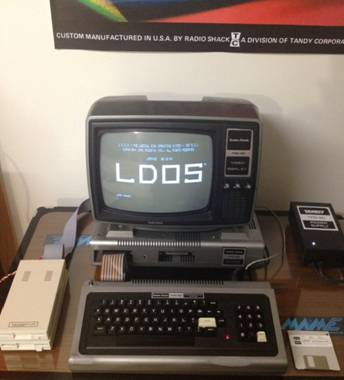

Dean
Bear's 3.5" floppy-based Model 1 with custom power supply and Amber CRT
Model 4, Downer, ACT.

Ian
Robertson's much-modified Model 1 system, Tea Tree Gully, SA.

David
Cooper's Tandy 1200HD and Model 1 systems, Seattle Washington, USA.

Dusty
Miller's 16K cassette-based Model 1 system, Louth, UK.

Jim
Eadie's Hard Disk-based Quad-floppy Model 4
"Super Micro", Montmorency, VIC.

John
Benson's Tandy II triple drives plus hard disk, Lismore, NSW.

Kevin
Warner's Model 4 and† III, Bunbury, WA.

Kevin Warner's
Model 100, Bunbury, WA.

Ian Robertson's
Model 4D 4-drive "Super" Microcomputer, Tea Tree Gully, SA.

Phil Avery's
Model III and DMP-200 printer, Wanganui, NZ.

David Cooper's
TRS-80 Model II, Seattle, Washington, USA.
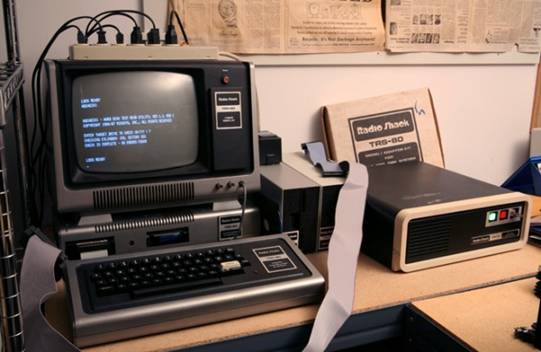
David Cooper's
Hard Disk based Model I, Seattle, Washington, USA.

Arvel Hathcock's Model 4, Grapevine, TX, USA.

Walter Shrauder's Model I, Wien,
Austria.

Efisio Mancini's Coco 3 setup,
Kensington Gardens, SA.


My 48K Model III
Hard disk system with hi-res, green screen and IBM double sided floppy drives,
and my 48K Model I system, Cairnlea, VIC.

Stephan Hodel's Model III, Switzerland.

Kurt Hamm's
Model I, Columbia, SC, USA.
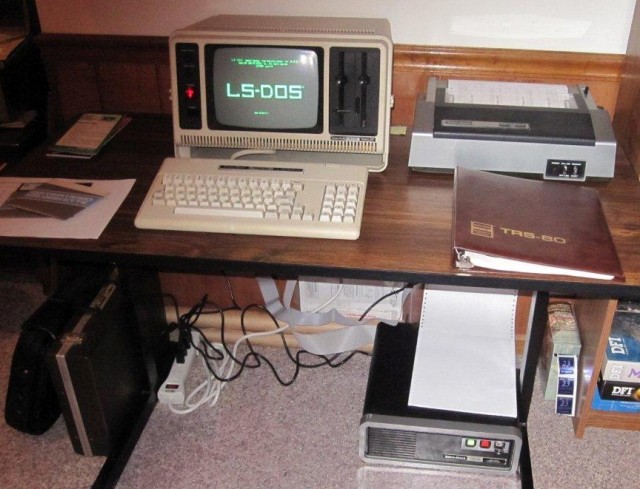
Bob Boyd's Hard
disk-based Model 4P, Zelienople, PA, USA.

Ray Whitehurst's
Model 4 Super Micro, Williamstown, VIC.

Bob Boyd's
hard-disk based Model III, Zelienople, PA, USA.

Stephen
Macmillan's Model 4 and Model I systems, Newcastle, NSW.

Don Gillies Genie
I with Tandy Expansion Interface and monitor, Glen Iris, VIC.
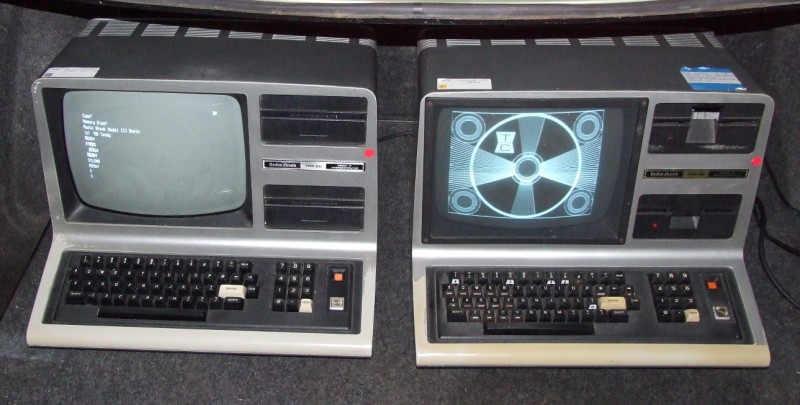
Ivan Kennedy's Sydtrug 16K cassette M3 and 48K High-Resolution M3, North
Ryde, NSW.
 †
†
Ivan Kennedy's Sydtrug Model 4P, North Ryde, NSW.

Ivan Kennedy's Sydtrug 128K Model , North Ryde, NSW.

Malcolm
Macleod's Model 4 with FreHD hard drive emulator connected, McLeod, VIC.
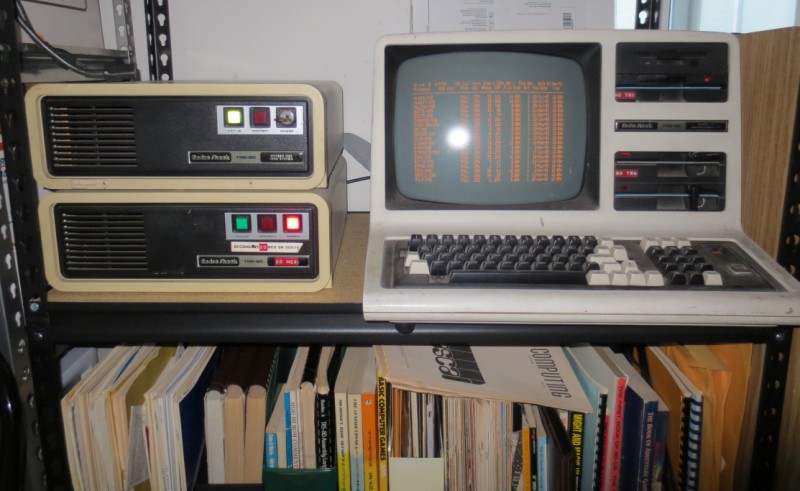
Ira Goldklang's hard disk based Model 4 Super Micro, Los
Angeles, CA.

Andrew Quinn's
Model III and 4, Ponsonby, Auckland, New Zealand.

Ivan Kennedy's
2nd Model 4 with FreHD, North Ryde, NSW.

Ivan Kennedy's
2nd Model 4P with FreHD, North Ryde, NSW.

Ray Whitehurst's
Model III with FreHD, Williamstown, VIC.

Andrew Quinn's
Model I system, Ponsonby, Auckland, New Zealand.

Frank Galphin's Model III, DeBary, FL,
USA

David Cooper at
his Model I in 1980, Seattle, WA, USA.
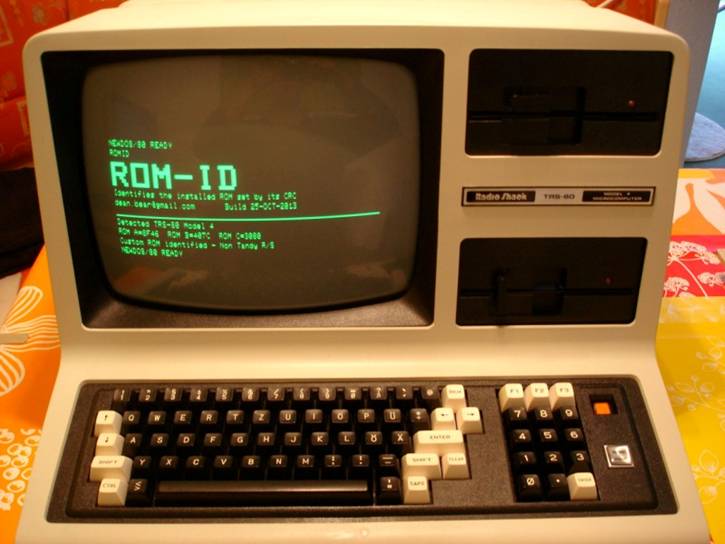
Rainer Fredrich's French-made Model 4, Dietzenbach,
Germany.

Hans J. Rietveld's Model 4P, Den Haag, The Netherlands

Iain Hancock's
Model 4 with FreHD, UK
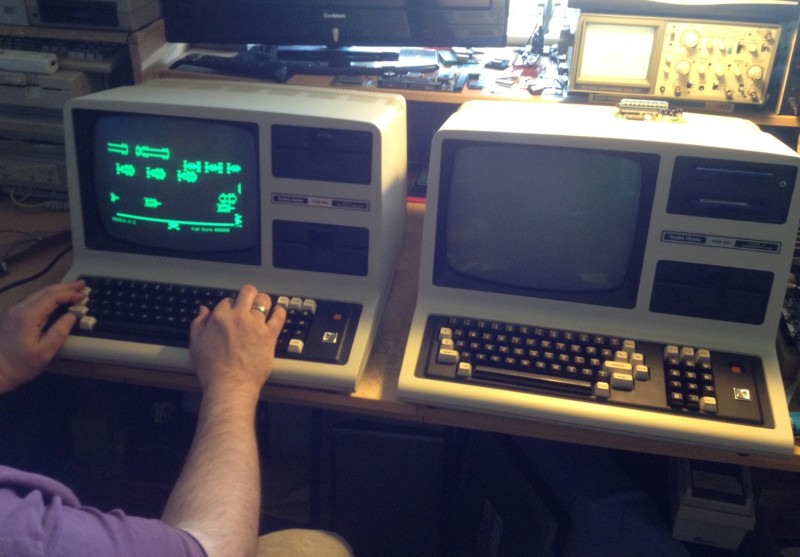
Bas Gialopsos
two Model 4 systems, UK.

Barrie Clark's
Model 4, California, USA

Tim Krause's
Model III, Sailor's Gully, VIC

Mike Holmes'
Model 4 with amber CRT, Seattle, WA, USA

Bas Gialopsos
Model III system, UK.
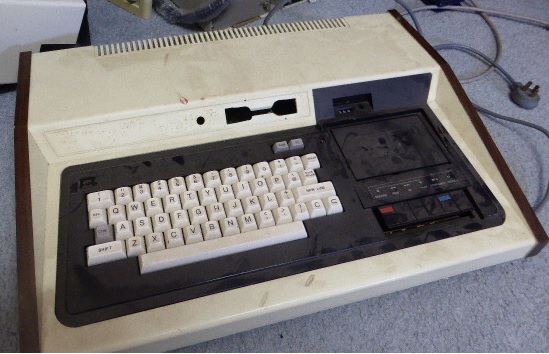
Tim Krause's
Dick Smith System 80 early Black Label, Sailor's Gully, VIC.

Hans J. Rietveld's Model II, Den Haag, The Netherlands

Bill Bright's
Model III, USA.

John M. Lee's
Model I, Atlanta, GA, USA.

Hans J. Rietveld's Model I, Den Haag, The Netherlands

Brett Paulin's TRS-80 workshop, Glen Waverly, VIC.

Phil Avery's
Model 4 with FreHD, Wanganui, NZ.

John Bradbury's
Model 4, West Sussex, UK.

Peter Cetinski's Model III with FreHD, New York, USA.

Kevin Parker's
Model 16B, Mortlake, VIC.

Don Gillies'
System 80, Glen Iris, VIC.

John Benson's
Tandy 3 system, Lismore, NSW.

Hans J. Rietveld's dual-drive Model 12 system, Den Haag, The Netherlands.

Jeff Brown's
Model III, Melbourne, VIC.

Elden Foot's Color Computer 1 system, Gladestone,
QLD.

Rick Ragnini's Model I with FreHD system, Darien, IL, USA.

Terry
Stewart's Model I Level 1 system, Palmerston North, NZ.

Kevin
Parker's Model 4 with FreHD, Mortlake, VIC.

James Gunn's
Model III, Flagstaff Hill, South Australia.

Brad Nelson's
TRS-80 8in business computer collection, Wisconsin, USA.

Brad Nelson's
TRS-80 Model III system with hard drive and Line Printer V, Wisconsin, USA.

Peter Howard's
Model I system, Morisset, NSW.

Bill Bright's
Diskless Model III with FreHD, USA.

Pino Convertito's Model III with FreHD, Limena,
Italy.

Hans J. Rietveld's Model III, Den Haag, The Netherlands

Pino Convertito's Hi-Resolution Model4P with FreHD, Limena, Italy.

John Benson's
UK-spec Hi-Res Model I, Goonellabah, NSW.

John Benson's
Hi-Res (PCG-80) System 80 running 'Catacombes',
Goonellabah, NSW.

Bas Gialopsos
Hi-Resolution Model I system, UK

Don Mankin's Hi-Res (80-Grafix) Model I, Lake Havasu City, Arizona.

John Benson's
rare Tandy 2 microcomputer system , Goonellabah, NSW.

Patrick Jordan's
Model I system, Pyrmont, NSW.
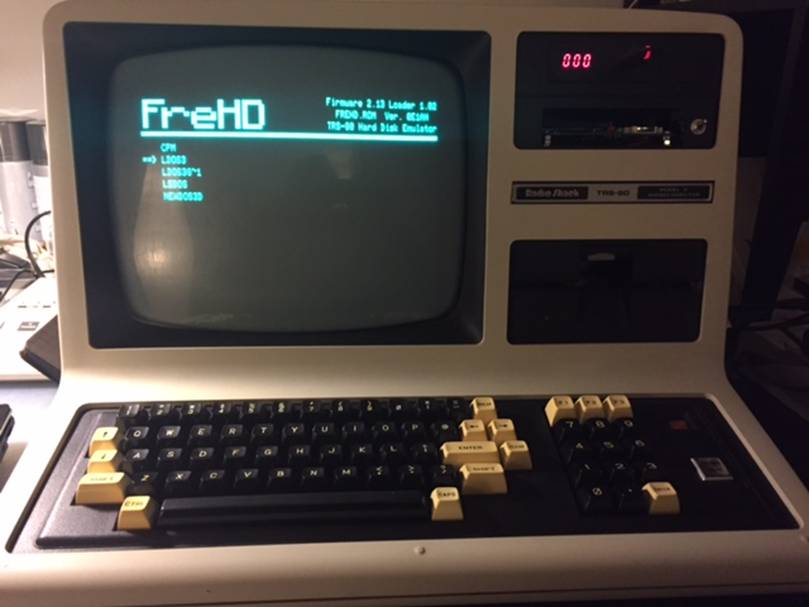
Pino Convertito's Model4 with FreHD, Limena,
Italy.

Louie Compex's Model I and 4, USA.

Peter Howard's
Model 4 system, Morisset, NSW.

John Moodie's 64K Coco 1, Morewell,
VIC.

Jean-Marie Chauvet's Model , France.
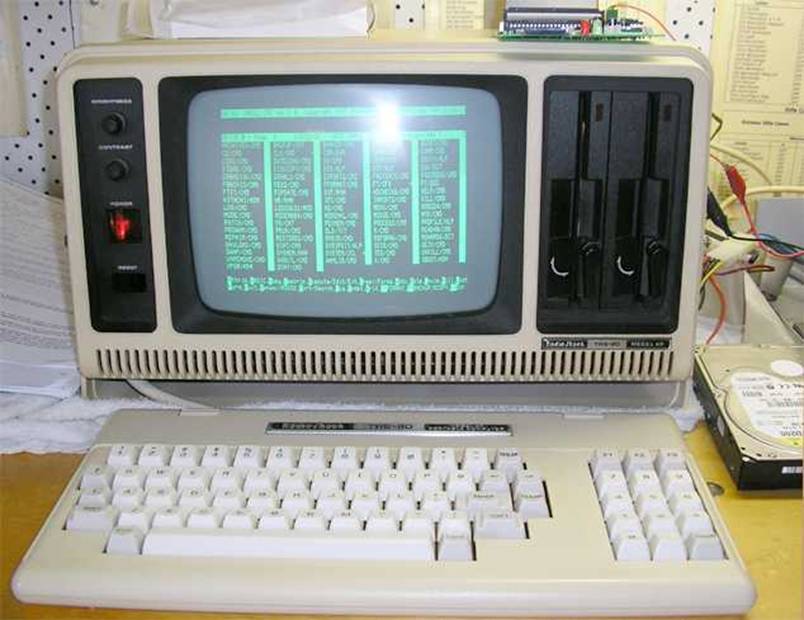
Garry Howarth's Model 4P with FreHD, Hebersham NSW.
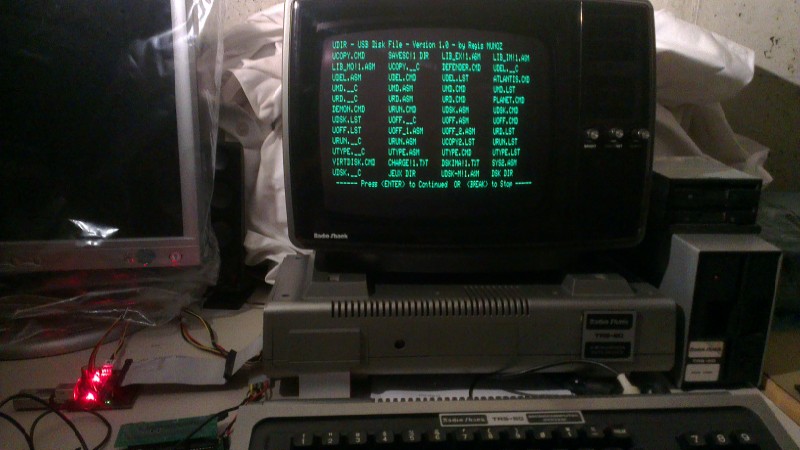
Rťgis Munoz
Model I System, France

John Benson's
Model 12, Lismore NSW.
†
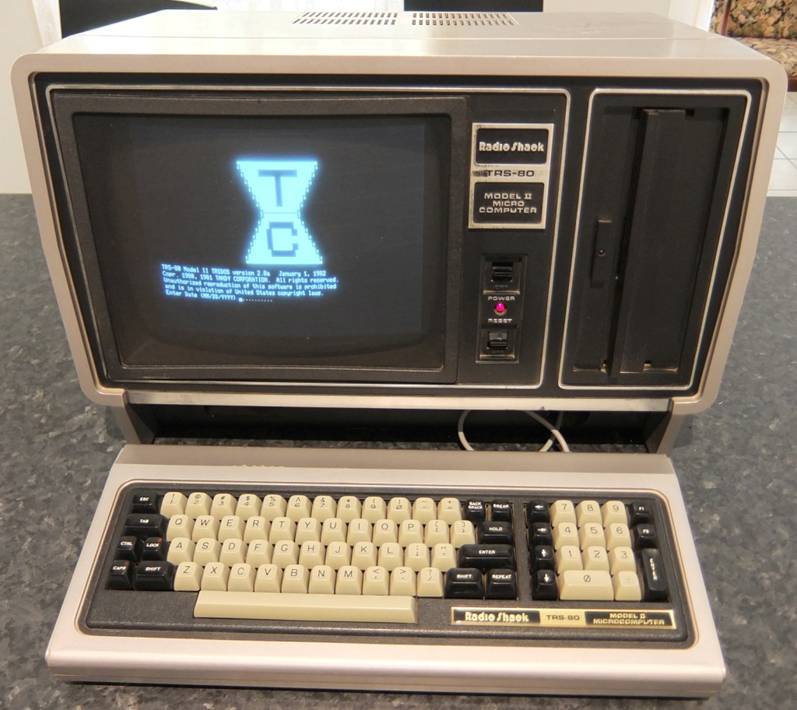
My Model II
system restored and working

Barry Armour's
Model 4, Macedon, VIC.

Paul Curtis'
Tandy Model 4D, Oregon, USA.
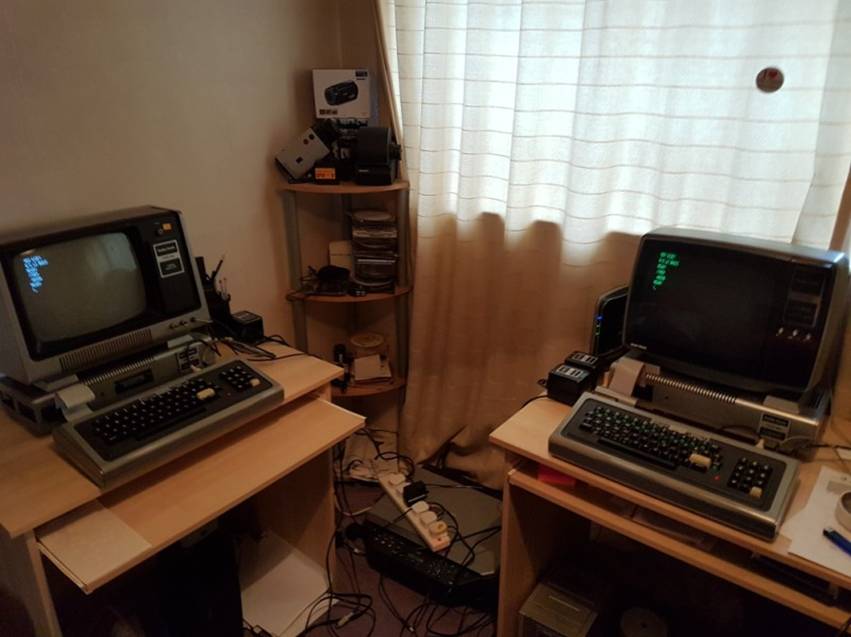
Cat Mantra's
Model I collection, West Midlands, UK

Wolfgang Apalups
4P, Germany

Hans J. Rietveld's Model I Level I, Den Haag, The Netherlands

Christian Schreude's Model II system, Belgium.

Tim Halloran's Model III with FreHD, Pittsburgh, USA.

Dimitri
Theulings' Model I system, Suffolk, UK.
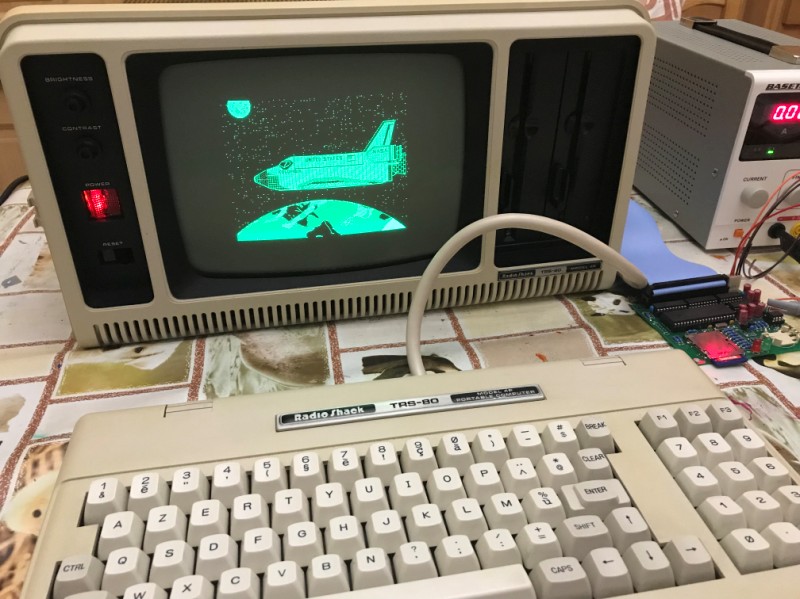
Patrick Colman's
4P system, Kessel, Belgium.

Jason MacDermott's Model 4 system, Canada

John Moodie's Diskless Model III System, Morwell, VIC.

Donny Bolton's
Model 4P, South Carolina, USA.

Rhonda Miller's
Tandy 1000EX, Melbourne, VIC.

Jess Kellett's Model III, Bendigo, VIC.

Gary Howarth's Dick Smith System 80, Sydney, NSW.
†

Charles Husdon's Model 4, Chagrin Falls, OH

Michael Wessel's Model I system, Palo Alto, CA










